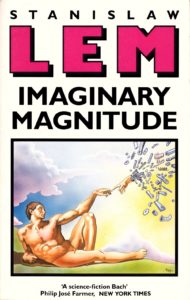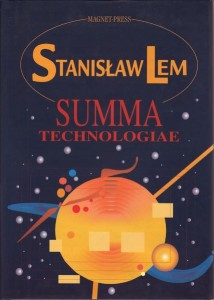 It has been said, and with much justice, that Stanislaw Lem has transformed science fiction from a genre to a literature.
It has been said, and with much justice, that Stanislaw Lem has transformed science fiction from a genre to a literature.
 His current collection of short stories, essays and obiter dicta bear out this high characterization because it shows that Lem has lost none of his inventive powers, ironical musings, corruscating wit and narrative skills. The concept of Imaginary Magnitude is itself thought provoking: In the next century people will be too busy to read books from cover to cover. Accordingly Lem provides us with the prefaces to important volumes.
His current collection of short stories, essays and obiter dicta bear out this high characterization because it shows that Lem has lost none of his inventive powers, ironical musings, corruscating wit and narrative skills. The concept of Imaginary Magnitude is itself thought provoking: In the next century people will be too busy to read books from cover to cover. Accordingly Lem provides us with the prefaces to important volumes.
In these prefaces Lem parodies the literary shorthand so often found in the preamble of multi-volume histories of science, art and literature. The Lem approach is to caricature bibliographical pretentiousness and the other esoterica of the publishing scene. Lem’s caricatural skills go far beyond style. In his introduction to “Bitic Literature,” be instructs the reader in a new genre which the future will produce: “work of nonhuman origin — one whose real author is not a human being.”
In the fantasy which Lem concocts, all of Bitic studies arc subjected to scientific analysis while a special emphasis is placed on four “peaks,” namely monoetics, mimesis sophocrisis and apostasy.
The high point in Lem’s reconstruction of future umes is his introduction to “Eruntics,” in which the Golem XIV and the talking bacteria reader is treated to a highly sober account of how Reginald Gulliver (the name is not accidental), an amateur bacteriologist, decided to teach bacteria English.
Continue reading

